Best
Beginner Trumpet
-
Overall: Student Bb trumpet with beginner-friendly features
-
Best Feature: Rugged monel alloy valves
-
TedScore™: 8/10
Best
Overall Trumpet
-
Overall: High-precision machined valve section and nickel-silver outer slides
-
Best Feature: The hand-hammered yellow brass bell delivers rich and compact quality
-
TedScore™: 10/10
Best
Intermediate Trumpet
-
Overall: Red brass lead pipe offers a level of breath resistance
-
Best Feature: Braced monel valves provide extra durability
-
TedScore™: 8/10
Listening to the best jazz trumpet players has always amazed me. Their sizzling solos and smooth tunes transform any space into a lively jazz club, full of rhythm and energy.
It’s a magical world where every note tells a story, and the greats like Louis Armstrong and Miles Davis are the storytellers who have shaped the soundscapes of jazz.
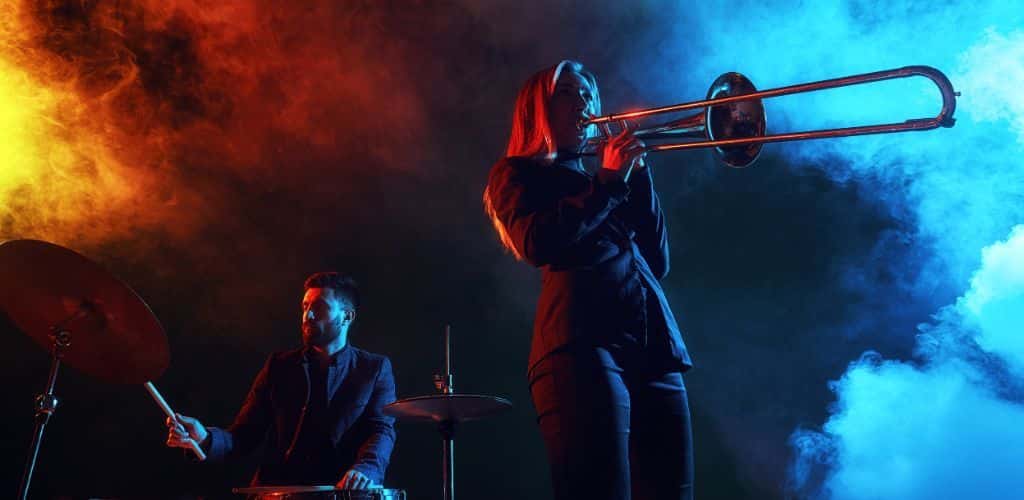
These musicians are not just performers; they’re architects of the genre, crafting towering edifices of sound that continue to inspire countless artists, including me.
In this article, we will swing through the lives and tunes of these maestros. You won’t just be reading—you’ll be experiencing a piece of music history.
Iconic Jazz Trumpet Players
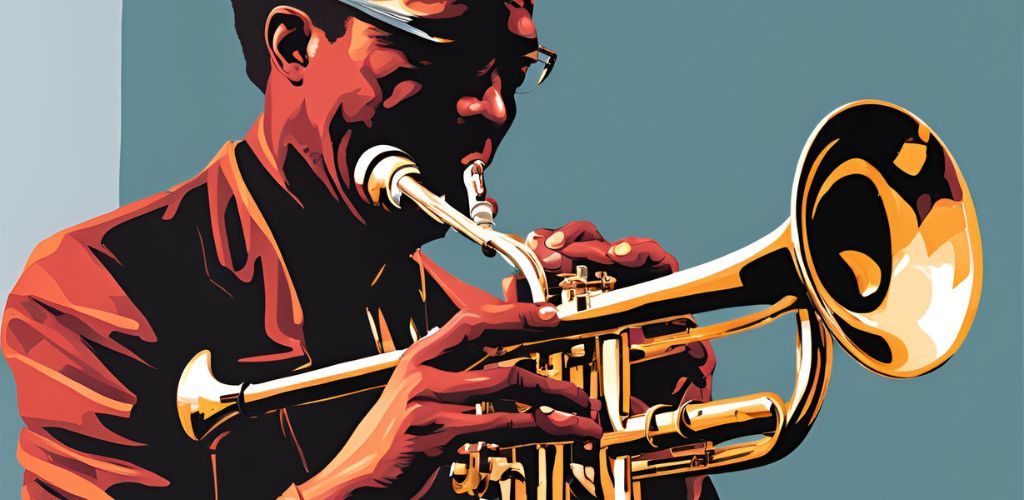
When we look at the great jazz trumpet players, we find talented pioneers whose music and skills have influenced many generations.
They started with catchy rhythms in New Orleans, moved on to complex harmonies in bebop, and created relaxing sounds in cool jazz, each leaving their mark on jazz history.
Louis Armstrong and the Hot Five

Louis Armstrong, affectionately known as Satchmo, is arguably the father of jazz trumpet. His tenure with the Hot Five and Hot Seven in the 1920s solidified his status as a jazz icon.
His innovative approach to rhythm and his charismatic, raspy singing voice made Armstrong not just a master trumpeter but also a beloved entertainer.
Dizzy Gillespie's Bebop Mastery

Dizzy Gillespie was a beacon of the bebop movement, his puffed cheeks and bent trumpet becoming symbols of a jazz revolution.
He played with luminaries such as Charlie Parker and Max Roach, and his complex rhythms and virtuosic improvisation embody the frenetic tempo of the bebop era.
Miles Davis's Diverse Contributions

Miles Davis was a chameleon of jazz, effortlessly adapting from bebop with Charlie Parker to pioneering cool jazz, hard bop, and even jazz fusion.
His albums ‘Kind of Blue’ and ‘Bitches Brew’ are landmarks, showcasing his deep musical intellect and ability to push boundaries.
Chet Baker: The Prince of Cool

Chet Baker’s lyrical trumpet playing and tender singing earned him the Prince of Cool moniker.
His work stands at the apex of the incredible jazz movement, characterized by a relaxed, melancholic style that spoke volumes with understatement and nuance.
Contemporary Masters

The legacy of the trumpet in jazz continues with contemporary masters like Wynton Marsalis, Nicholas Payton, and Roy Hargrove. They maintain the tradition while infusing modern sensibilities into their music, connecting a rich past with a vibrant present.
From hard bop to more eclectic modern stylings, these artists continually redefine what it means to be a jazz trumpet player.
The Origins of Jazz Trumpetry
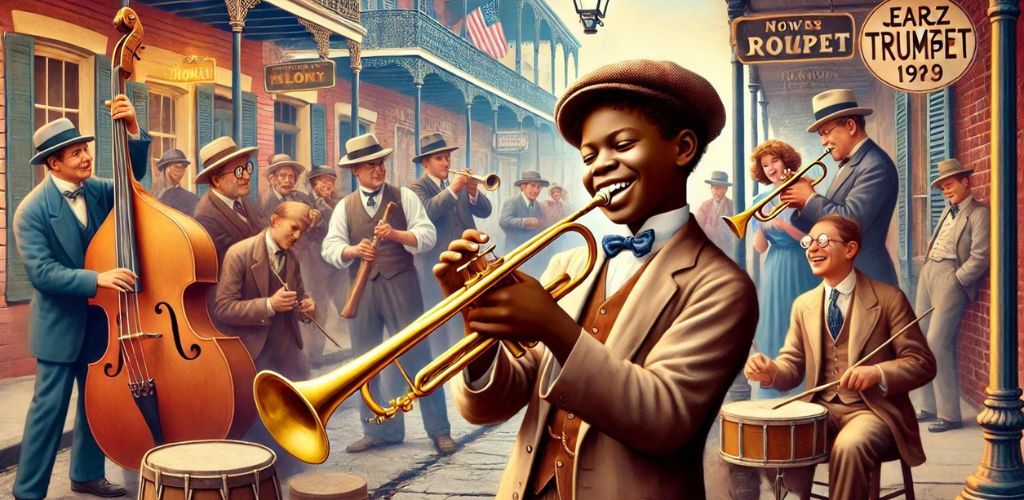
The birth of jazz trumpetry can be traced back to the vibrant streets of New Orleans. This is where improvisation met with the stirring soul of American music.
It’s there, amidst the bustling energy of Dixieland, that jazz trumpeting began to define itself. Known for its swinging rhythms and unique blend of sounds, it became the heart of a new musical epoch.
I read that Buddy Bolden was among the first to wield the horn in this new dynamic style. His influence on jazz is often considered the starting point for all that followed.
Picture King Oliver gripping his cornet, adding his rich depth to the sound that captivated audiences.
His protégé, Louis Armstrong, became an icon, his name synonymous with the essence of jazz trumpeter.
In jazz, the cornet and trumpet were not just musical instruments. They were the vehicles for the evolution of an exquisite form of expression in American music.
Through these brass voices, stories were told, and emotions were conveyed, all without saying a word.
Jazz trumpeters transcended being mere notes on a scale; it became a language all its own.
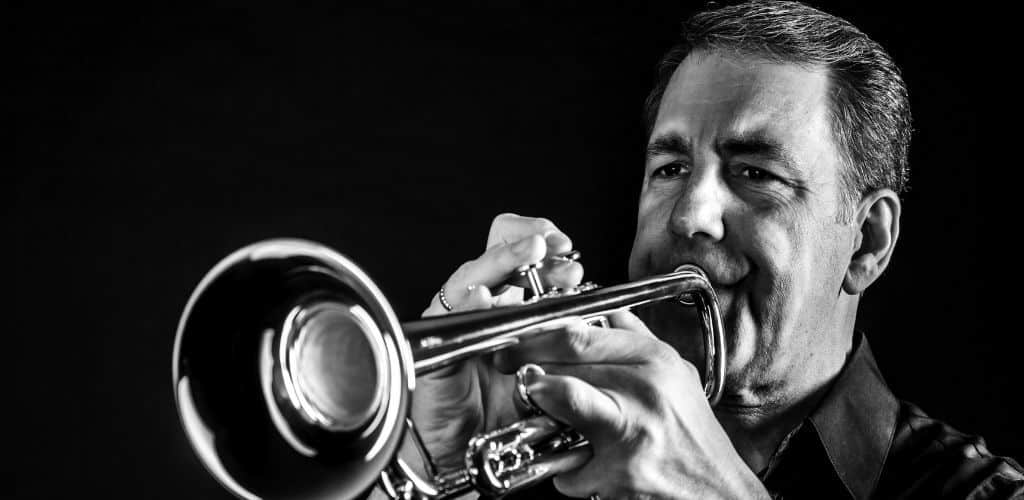

The Evolution of Jazz Styles
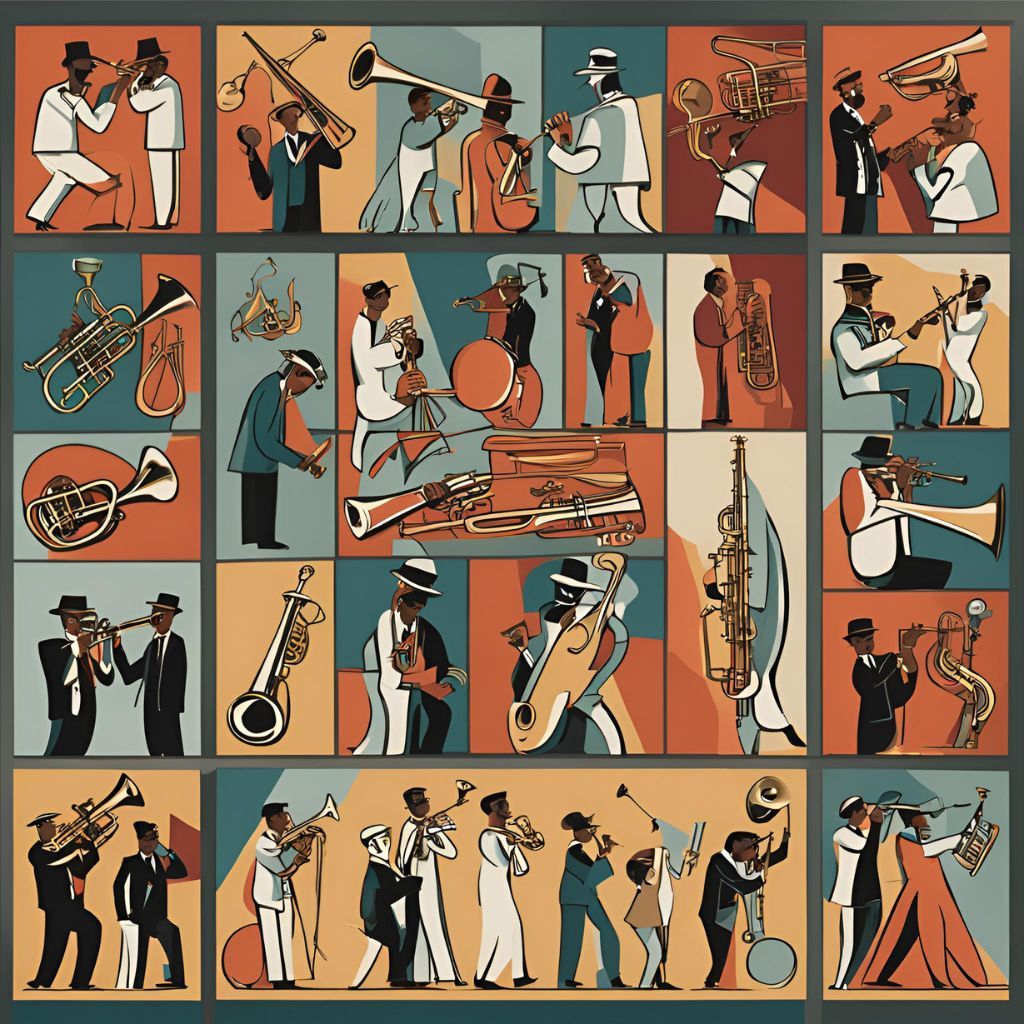
I’m taking you through the key shifts in jazz styling, tracing the genre’s evolution from the dynamic rhythms of bebop to the experimental vibe of free jazz.
Jazz has always mirrored its era, incorporating cultural nuances into each newly minted style.
Bebop Innovations

I find bebop to be a true revolution in jazz, marked by fast tempos and complex chord progressions.
Remarkable musicians like Dizzy Gillespie and Charlie Parker pioneered this style in the 1940s. Bebop distanced itself from dance-oriented swing, focusing instead on the art of improvisation and technical mastery.
Swing and Bebop Intersection

With its infectious groove, swing coexisted with bebop, sharing an intriguing connection.
Artists like Roy Eldridge, straddling both genres, brought the improvisational skill of bebop to the smoother, rhythmic swing. This intersection cultivated an accessible bridge for audiences, easing into the newer form of jazz.
Hard Bop and Post-Bop Progression

Hard bop escalated bebop’s intensity with influences from rhythm and blues and gospel music. In the 1950s, labels like Blue Note were hotbeds for this potent style.
Post-bop, an extension of this progression, allowed artists to incorporate elements from other genres, creating rich, diverse acoustic jazz tunes.
Fusion and Free Jazz Expressions

Jazz fusion emerged, fusing jazz’s intricate improvisation with electric instruments and the beats of rock, funk, and R&B.
Meanwhile, free jazz broke away from conventional rhythms and harmonies, challenging listeners with its unstructured, avant-garde approach. It was an artistic liberation as much as a musical one.
In summary, jazz styles have morphed from the structured dances of Dixieland and swing to the wildly uninhibited expressions in free jazz and fusion, always capturing the spirit of innovation.
Technical Mastery of Jazz Trumpet
The technical mastery of the jazz trumpet hinges on a deep understanding of articulation, tone, and improvisation.
These nuances can elevate a trumpeter from good to great, especially within a jazz ensemble.
Articulation and Tone

My focus on articulation and tone is rooted in their significance for expressive playing. It’s all about how a trumpeter attacks each note, sustaining clarity and producing a rich palette of sounds.
Every shade of tone matters, from the brassy blares in high-energy bebop tunes to the mellow whispers of a flugelhorn. Great jazz players often blend techniques from classical training with the soulful expressions found in blues, translating emotions into aural narratives.
Improvisation Techniques

I approach improvisation as the heartbeat of jazz. Here, players like me showcase our spontaneity, weaving melodies from thin air.
We might draw inspiration from scat singing, turning syllables into trumpet notes with an impromptu flair.
During solos, building on the existing chord structures of a piece, I might introduce fast scales and arpeggios or even create tension through dissonances that resolve in unexpected ways. This unpredictable nature keeps the audience – and often the ensemble – on their toes.
The Role of Trumpet in Ensembles
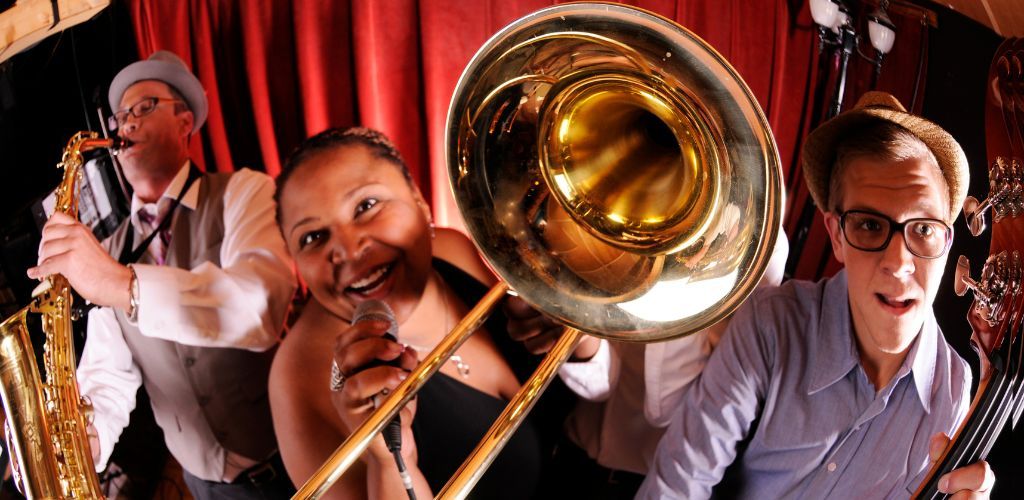
My role as a trumpet player in jazz ensembles can be likened to a storyteller who converses with other voices like the saxophone.
My trumpet might take the lead in a typical jazz band, cutting through with bold statements or offering rhythmic support with muted backgrounds.
I’ve noticed that the interplay between horns, especially in a section with saxophones, is essential, as are blending harmonies and sometimes playing in unison for dramatic effect.
Whether I’m punctuating the groove or soaring above an intricate arrangement, I serve to enhance the collective sound with my unique voice.
Influential Jazz Trumpet Recordings
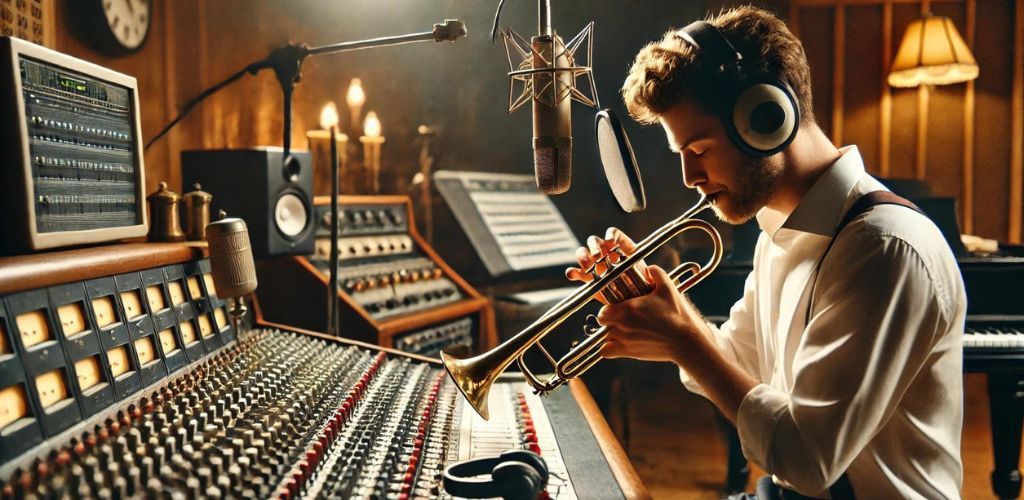
When I turn back the pages of jazz history, I can’t help but marvel at the rich tapestry of trumpet recordings that defined entire eras.
Louis Armstrong’s collection, “The Best of the Hot Five and Hot Seven Recordings,” encapsulates a crucial moment in jazz evolution, championing the early sounds of swing with a raw and energetic style.

As the calendar pages flipped, bebop surged to the forefront, propelled by Dizzy Gillespie’s virtuosic prowess. His innovative approach is immortalized in “Groovin’ High,” an album showcasing staggering technical command and delightful playfulness.

Transitioning to hard bop, Clifford Brown left an indelible mark with “Study in Brown.” It is an exemplary exhibition of crisp articulation and sophisticated harmonies, with Clifford’s trumpet shining brightly as a beacon of the genre.

These tunes, such as “Sandu” and “Joy Spring,” have transcended time and are firmly rooted as jazz standards.
No narrative of jazz trumpet can exclude Miles Davis’s brooding intensity. His transformative record, “Kind of Blue,” is a testament to the expressive power of minimalism and modal jazz. It’s a profound lesson in the economy of notes and the depth of expression a single horn can convey.

Each album serves as a chapter in the profound story of jazz trumpet—a story that resonates with the timbre of innovation and the rhythm of progress.
Just by listening to these pieces, I feel like I’m witnessing the evolution of jazz trumpets firsthand, one note at a time.
Jazz Trumpet in the Music Industry
Jazz trumpet has held a vibrant position in the music industry, with its dynamic sound resonating from iconic record labels to live venues.
It has influenced various music genres, leaving an indelible mark through recordings and performances.
Record Labels and Releases
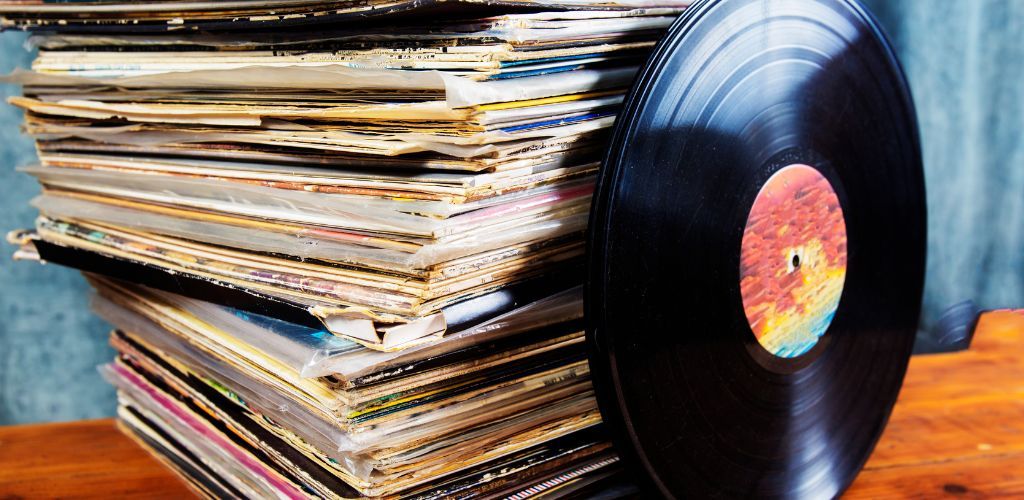
I know that Blue Note Records is one of the key players in jazz trumpet recordings.
They’ve showcased non-American talents like Dizzy Reece, bringing a Jamaican flair to the American jazz scene. This label has been instrumental in defining the sound of jazz trumpets, offering a platform for innovative trumpeters to push musical boundaries.
I’ve seen the jazz landscape dotted with legendary trumpet-led albums.
Milestones in recording history often revolve around the works of artists like Miles Davis, whose albums have become the backbone of jazz and have also shaped the sound of modern music.
Live Performance Circuit
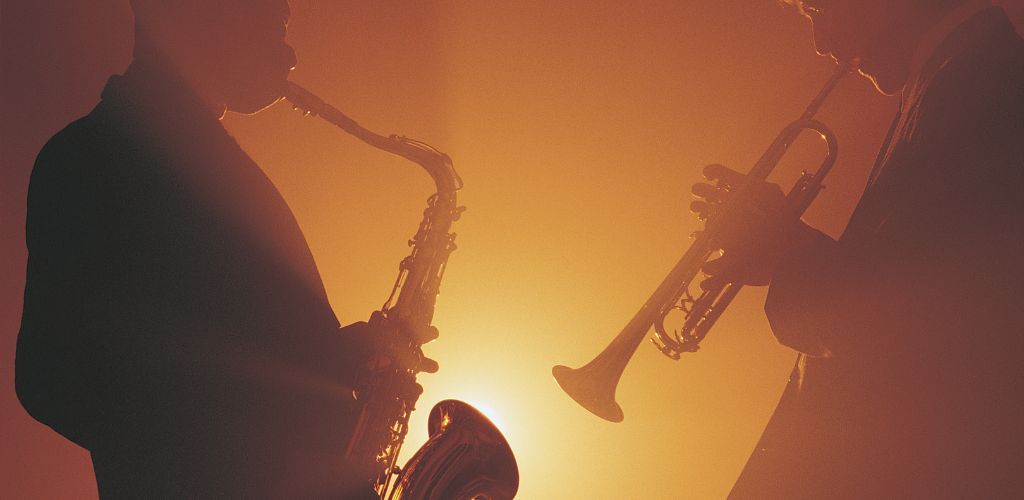
The live performance circuit has always been vital to a jazz trumpeter’s career.
I’ve witnessed firsthand the energy of artists like Red Allen lighting up stages across New Orleans and beyond.
These performances offer an electrifying experience that studio recordings can’t fully capture, playing a crucial role in the preservation and evolution of jazz.
Playing live, jazz trumpeters have created a dialogue with their audience, influencing music scenes from cozy jazz clubs to grand concert halls. Their performances reverberate through the industry, setting the standard for live jazz and keeping the genre’s spirit alive.
Influence on Modern Music Genres
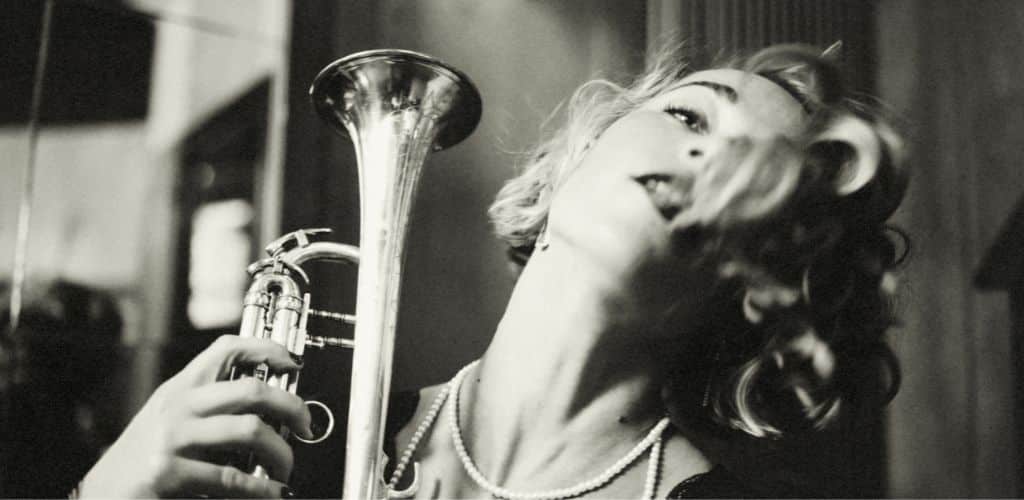
It’s incredible to see how the jazz trumpet has infiltrated various genres.
Clifford Brown’s compositions, such as “Sandu” and “Joy Spring,” have become jazz standards and have left their mark beyond the confines of jazz. The stylistic elements of jazz trumpet play can be heard influencing artists across various genres, from funk to hip-hop.
I’ve observed the influence of jazz trumpet virtuosos like Miles Davis within jazz and the entire musical tapestry. This influence is evident in how contemporary musicians approach improvisation, harmony, and melody, echoing the trailblazing spirit of jazz’s finest trumpeters.
Art Blakey’s Jazz Messengers is renowned for its influential role in shaping modern jazz and nurturing talented musicians. The band’s dynamic sound and innovative approach have captivated classical music enthusiasts and jazz fans alike, showcasing the versatility and depth of jazz music.
The Creole Jazz Band legacy has inspired numerous modern jazz trumpet players, influencing the evolution of jazz orchestras and the broader jazz landscape. Additionally, the band’s impact can be seen in the works of influential figures such as “Little Jazz” Eldridge, further solidifying its profound influence on jazz.
Cultural Impact of Jazz Trumpet
In discussing jazz trumpet, I’m exploring its profound cultural resonance.
From the alleyways of New Orleans to the global stage, the instrument exemplifies a narrative of artistic expression and influence.
Jazz stands as a poignant testament to African American culture. Birthed in the vibrant melting pot of New Orleans, it’s a genre that embodies the resilience and creativity of the African American community.
With its piercing cry and warm embrace, the trumpet tells the story of their struggles, triumphs, and enduring spirit. It was on the streets of this city where jazz trumpeters crafted a sound that would echo the sentiments of generations.
Notable jazz trumpeters, such as Louis Armstrong, sculpted a distinctly American musical landscape. Their virtuosity elevated jazz to a premier art form, encapsulating the African American pursuit of freedom through music.
Armstrong’s innovative techniques and charismatic performances positioned him as a cultural ambassador, carrying jazz’s quintessential essence across national and ethnic boundaries.
The international ramifications of jazz trumpet cannot be understated. From Paris to Tokyo, jazz found a welcoming audience; with it, the trumpet sang of an African American legacy inscribed in the universal language of music.
American jazz musicians often ventured to Paris, where they enjoyed an avid following and the city’s fabled embrace of the arts. Here, the trumpet’s voice resonated with a message of sophistication and liberation, unshackled from the racial prejudices present back home.
By the mid-20th century, the footprint of jazz trumpeters had imprinted itself on the global music scene. African rhythms mingled with Western harmony tell a story of cultural exchange, with the trumpet often leading the dialogue.
Their artistry advanced jazz from an American phenomenon to a cherished global tapestry—evident in celebrations like International Jazz Day, which signal the solidarity and impact of this beloved American export.

Challenges and Triumphs
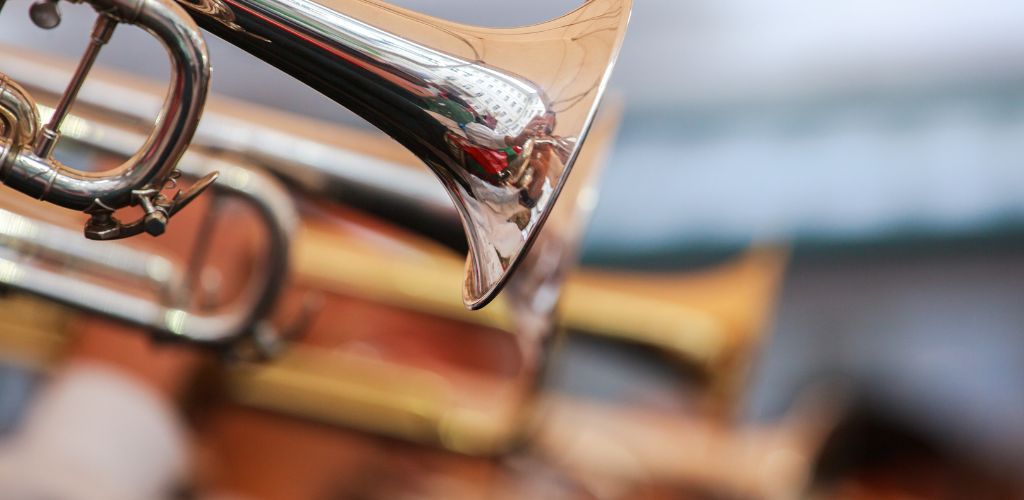
In jazz, artists often navigate profound challenges to achieve great triumphs. My focus is on how they’ve turned adversity into achievement.
Overcoming Racial Barriers
The tapestry of jazz is rich with African American innovators who’ve broken racial barriers with their music.
As an African American genre, jazz provided a voice amidst the oppressive environment of racial segregation. Musicians like Louis Armstrong brought jazz to the forefront despite the era’s harsh discrimination. They not only became icons of jazz but also champions of civil rights.
Substance Abuse among Musicians
The jazz scene, sadly, has had its fair share of battling against substance abuse. Heroin, among other drugs, ravaged the lives of some of the genre’s most gifted artists.
Yet, even facing these personal demons, many musicians found a path to recovery and continued innovating. Their music often served as a sanctuary and a stark reflection of their struggles.
Preserving the Legacy
Preserving jazz’s unique legacy rests on honoring its past and nurturing its future. I marvel at the tireless work of educators and musicians to keep the spirit of jazz alive.
They ensure that the stories of past greats, as well as their musical innovations, remain influential. Their dedication makes jazz a vibrant and evolving art form, bridging the gap between generations.
Future of Jazz Trumpet
With jazz constantly evolving, I see trumpet players pivotal in shaping its journey. They are the standard-bearers, weaving innovation into each note.
Education is key; it’s where young artists harness their potential. By studying the masters and exploring new techniques, they secure the genre’s vitality.
In my observation, innovators emerge through a blend of tradition and rebellion. They show respect to the likes of Louis Armstrong while daring to be different. This marriage of respect and reinvention guarantees a refreshing future for jazz.
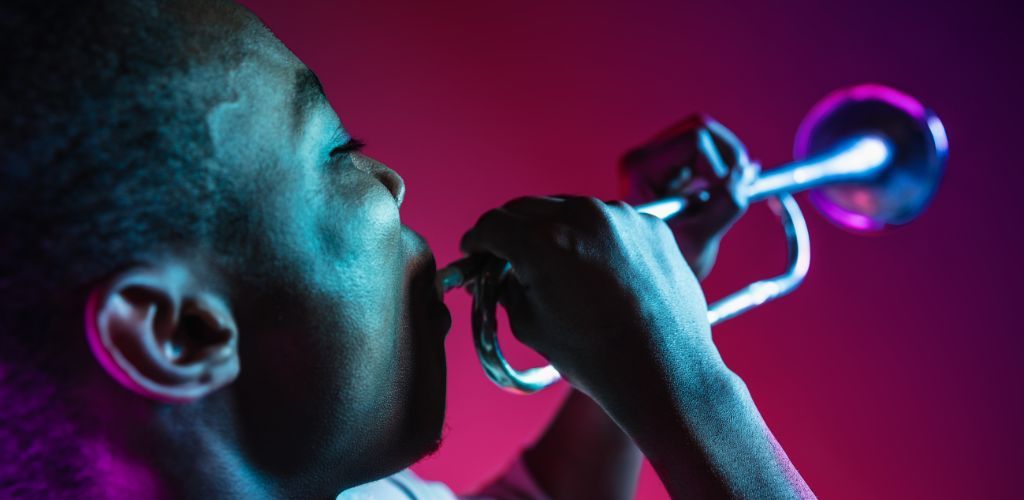
The music industry is watching for these rising stars. Record labels and festivals are always on the hunt.
With platforms like social media, future trumpet maestros find their audience earlier. This can only mean a flourishing scene is on the horizon.
Access to diverse education means a broader array of voices. These voices characterize the future of jazz trumpet. With each young artist comes a new chapter.
My belief is steadfast: the essence of jazz will thrive through the horn’s bell. Innovation, education, and the music industry are interlocked pieces that ensure the soul of jazz remains immortal.
Learning the Jazz Trumpet
I knew jazz was my calling when I picked up my first trumpet. The trumpet is synonymous with the spirit of jazz, brimming with the potential for vibrant improvisation and soulful education.
To master jazz trumpet, you embrace a journey of continuous learning, where every note tells a story.
My practice sessions are punctuated with the melodies of iconic jazz trumpet players. Their tunes illuminate the path from novice to maestro.
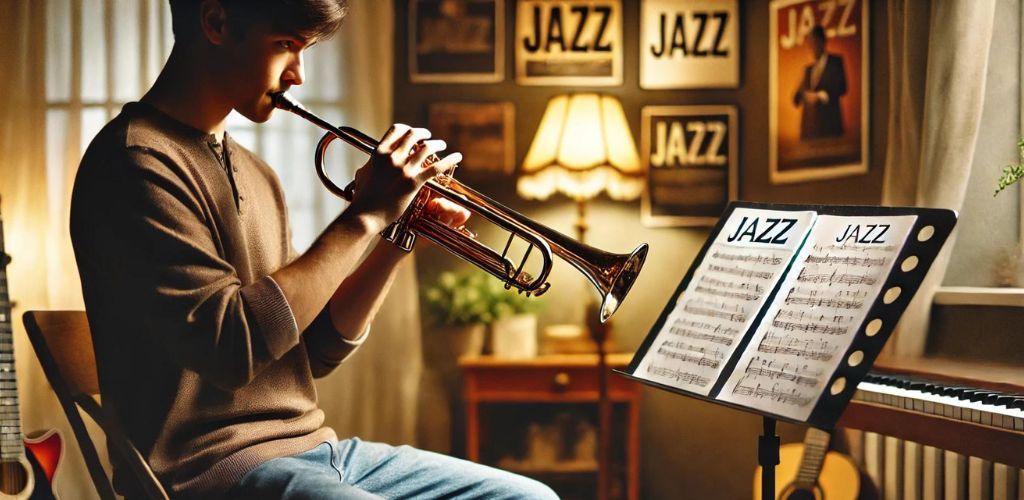
I focus on a blend of technique and expression; the technical scales and the daring jazz solos form the dual backbone of my education. Developing a sound that resonates with jazz’s rich history requires a marriage of discipline and creativity.
I immerse myself in the recordings of jazz legends like Louis Armstrong and Dizzy Reece. Their sounds, a feast for any learner’s ears, help me grasp the essence of jazz improvisation.
The deep vocabulary of improvisation is about more than just creating music on the fly. It’s about storytelling, exploring the harmony, and making the trumpet sing with a personal flair.
Jazz education is not confined to the walls of a classroom. Jazz is lived. I attend gigs, participate in jams, and seek out other musicians to broaden my horizons. This social learning aspect throws new challenges my way, pushing my boundaries.
Remember, every jazz legend was once a beginner, too.
Any aspiring trumpet player can leave a distinct mark in jazz by absorbing their legacies and practicing relentlessly. My trumpet is not just an instrument; it’s my voice in the grand, ongoing conversation that is jazz.
Best Trump on the Market
Yamaha YTR-2330
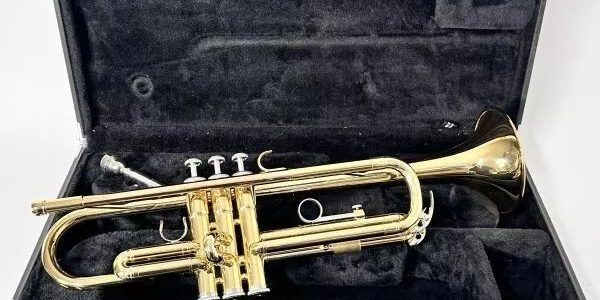
Yamaha’s entry-level model gives beginners a stately start.
It’s crafted for easy playability and consistent intonation, which takes the trepidation out of those early notes.
Yamaha YTR2330

FEATURES:
Student Bb trumpet with beginner-friendly features
OTHER INFO: Gold epoxy lacquer finish
- Customizable grip
- Register for a 5-year extended warranty and 3-month Tomplay Premium
- It may be more expensive compared to some entry-level trumpet options
When you click ‘Check Price’, you’ll see there are loads of great places to buy this item. Our personal favorite is Sweetwater for the US, and Thomann and Gear4Music for the UK & Europe.
They are the largest music retailers, with excellent customer service, competitive prices, really fast shipping, and the longest guarantees.
The professional musician who wrote this article combined many things,
from the product build, manufacturer’s reputation through to feedback
from other users, to create our famous TedScore™.
Bach TR300H2 Student Trumpet
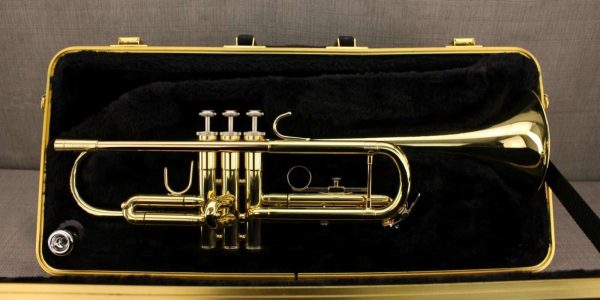
Stepping up a notch, it’s time to meet the TR300H2.
It shares the same venerable features as the elite Bach trumpets but is tailored for the budding musician in me. It’s like a tender nudge toward sophistication without the overwhelming complexity.
Bach TR300H2 Student Trumpet

FEATURES: Red brass lead pipe offers a level of breath resistance
OTHER INFO: Braced monel valves provide extra durability
- A clear lacquer finish brings a subtle warmth
- Lightweight 4.875-inch, seamless, encourages proper playing position
- It comes with a padded, double-walled case and a Bach 7C mouthpiece
- Some users have reported occasional issues with valve action that may need adjustment
When you click ‘Check Price’, you’ll see there are loads of great places to buy this item. Our personal favorite is Sweetwater for the US, and Thomann and Gear4Music for the UK & Europe.
They are the largest music retailers, with excellent customer service, competitive prices, really fast shipping, and the longest guarantees.
The professional musician who wrote this article combined many things,
from the product build, manufacturer’s reputation through to feedback
from other users, to create our famous TedScore™.
Jupiter JTR700 Standard Bb Trumpet
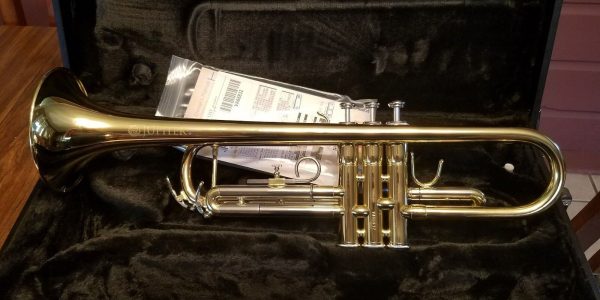
A solid intermediate trumpet that doesn’t demand a king’s ransom.
Its build quality is assured to be top-notch—an affordable step up for those intermediate players ready to bloom.
Jupiter JTR700 Standard Bb Trumpet
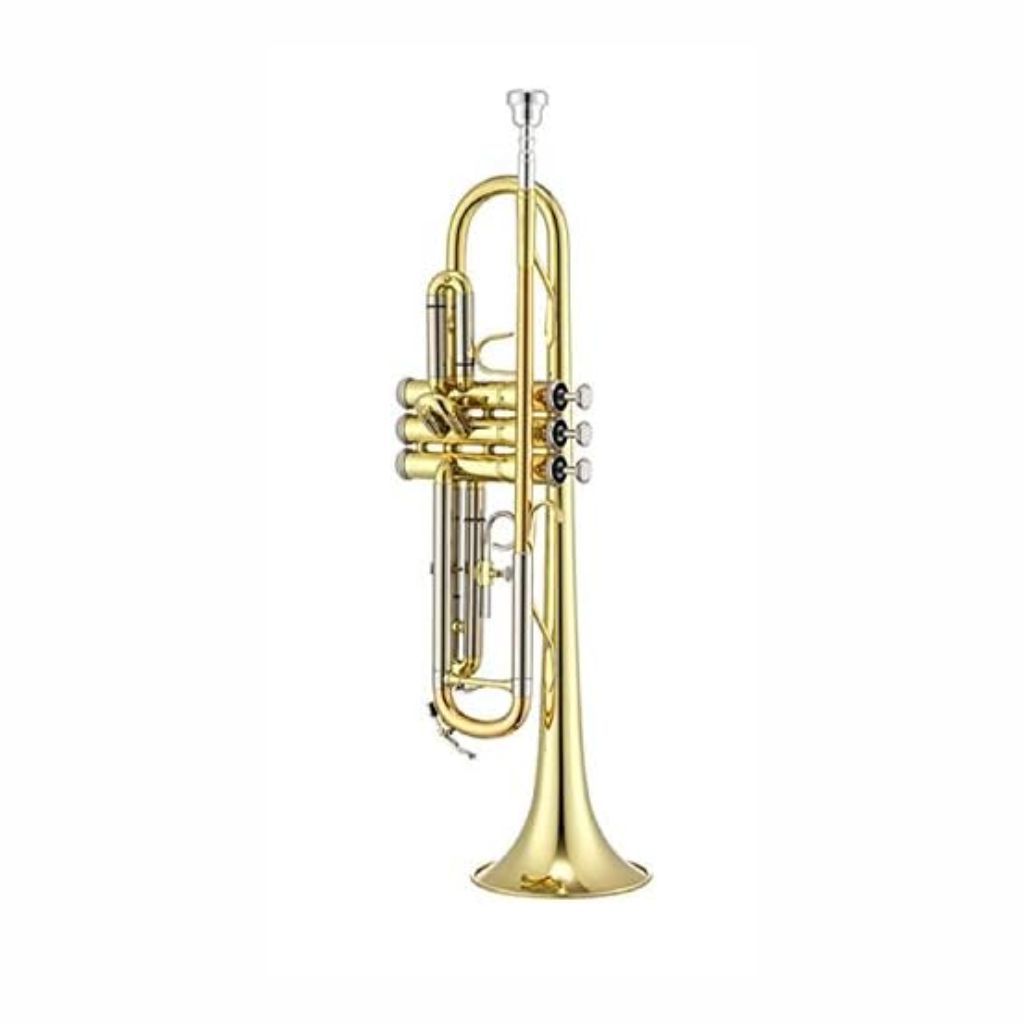
FEATURES: Nickel silver outer slides
OTHER INFO: Clear lacquer finish
- Finger buttons in mother-of-pearl look
- Beginner-friendly breath resistance
- 1st and 3rd valve slides provide effortless adjustability
- It comes with a standard ABS case
- Some users have reported valve sticking issues, impacting playability and necessitating maintenance
When you click ‘Check Price’, you’ll see there are loads of great places to buy this item. Our personal favorite is Sweetwater for the US, and Thomann and Gear4Music for the UK & Europe.
They are the largest music retailers, with excellent customer service, competitive prices, really fast shipping, and the longest guarantees.
The professional musician who wrote this article combined many things,
from the product build, manufacturer’s reputation through to feedback
from other users, to create our famous TedScore™.
Bach 180S37 Stradivarius Series

The 180S37 is often the centerpiece of a professional’s ensemble—a testament to Bach’s unparalleled craftsmanship.
It’s the quintessence of silver-plated splendor that professionals frequently yearn for.
Bach 180S37 Stradivarius Series
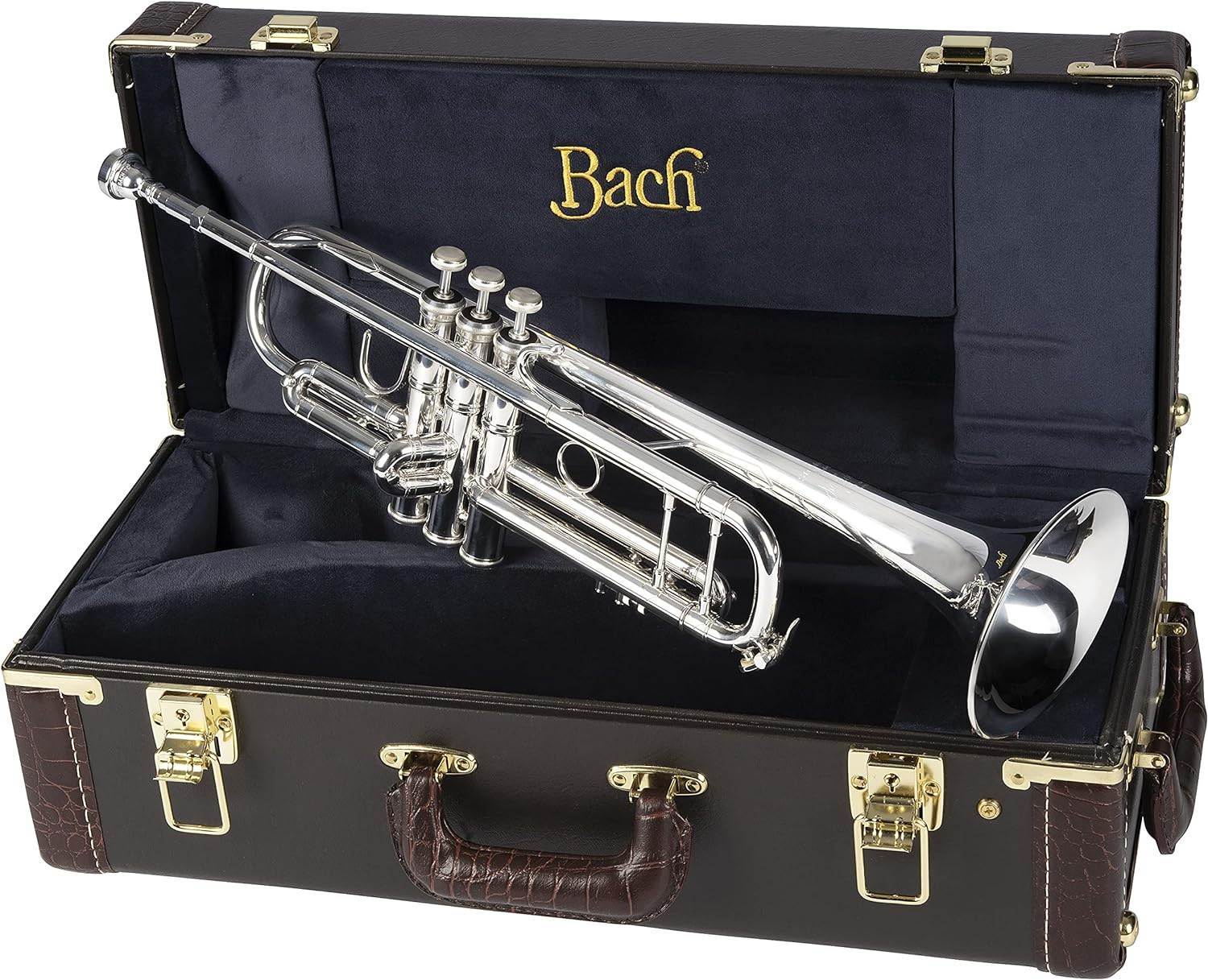
FEATURES: High-precision machined valve section and nickel-silver outer slides
OTHER INFO: The hand-hammered yellow brass bell delivers rich and compact quality
- Perfect for all genres of music
- It comes with a deluxe wood case and a Bach 7C mouthpiece
- None
When you click ‘Check Price’, you’ll see there are loads of great places to buy this item. Our personal favorite is Sweetwater for the US, and Thomann and Gear4Music for the UK & Europe.
They are the largest music retailers, with excellent customer service, competitive prices, really fast shipping, and the longest guarantees.
The professional musician who wrote this article combined many things,
from the product build, manufacturer’s reputation through to feedback
from other users, to create our famous TedScore™.
Best Jazz Trumpet Players:
Recap
In this journey through jazz’s pantheon of trumpeters, I’ve explored a range of virtuosos whose horns have essentially become extensions of their souls.
From the buoyant rhythms of “Dizzy” Reece’s Caribbean flare to the poignant melodies that flowed from Clifford Brown’s trumpet, each artist’s unique tone and phrasing tell a distinctive story.
Red Allen’s early influences nestled in New Orleans jazz, while the radical bebop transformations can be largely credited to Buddy Bolden and the innovative Louis Armstrong.
Roy Eldridge bridged styles, his Swing-era expertise charting a course to modern jazz sensibilities.
These artists, past and present, are bound by more than just their choice of instrument; they are linked by their shared quest to express life’s complexities through music. My appreciation for their craft is as strong as their notes were bold and their impact timeless.
Remember these names not merely as musicians, but as architects of the jazz language.
Wait! You might want to check this…
Discover the Best Trumpet Practice Mutes to help musicians practice quietly without disturbing others. This article provides valuable insights into the best mute options for trumpet players looking to maintain their practice routine while reducing sound output.
FAQ's
Some notable names often mentioned in discussions about the most significant jazz trumpet players include Louis Armstrong, Miles Davis, Dizzy Gillespie, and Clifford Brown, among others. Each of these musicians has made tremendous contributions to jazz’s evolution and left an indelible mark on the genre.
Louis Armstrong is often called the “trumpet king of jazz” due to his immense influence on the genre and pioneering contributions to jazz music. Armstrong’s innovative trumpet playing, distinctive voice, and charismatic stage presence solidified his status as a jazz icon, earning him widespread recognition as one of the most influential figures in the history of jazz.
Miles Davis is often regarded as the legendary jazz musician known for his innovative and influential contributions to the genre. His groundbreaking approach to music, spanning various styles and eras, has solidified his status as a legendary figure in jazz history.
Determining the “#1” trumpet player is subjective and varies based on individual preferences and opinions. Many trumpet players have achieved greatness in their own right, and different musicians resonate with various audiences. Some famous jazz trumpet players include Louis Armstrong, Miles Davis, Dizzy Gillespie, and Clifford Brown. These musicians have made significant contributions to trumpet playing and jazz music.




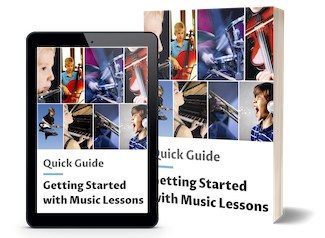







Digging the recommendations on influential jazz trumpet recordings. My vinyl collection is about to grow again, thanks to this article. Props to Cai for the curated list!
While I appreciate Cai’s attempt to cover the vast landscape of jazz trumpet, I feel the article misses out on some crucial avant-garde artists who’ve significantly shaped the genre’s direction since the late ’60s. The influence of figures like Don Cherry and Lester Bowie cannot be understated, and their omission seems like a significant oversight in an otherwise comprehensive list. It’s critical to recognize these contributions to fully appreciate the innovation within jazz trumpet.
hey does anyone have tips on how to get better at jazz improvisation? i’m just starting and it feels kinda overwhelming. got a Trumpet not too long ago and wanna dive into jazz.
Start with learning scales and listening to a lot of jazz. Imitate your fav artists and practice every day. You’ll get the hang of it!
Absolutely loving the section on Miles Davis and his diverse contributions to jazz. It’s so fascinating to see how his work spanned across so many periods and styles of jazz. I’ve always felt that his albums offer something new every time you listen to them. It’s great that Cai Isfryn highlights the impact of these legends. We owe a lot to their groundbreaking work.